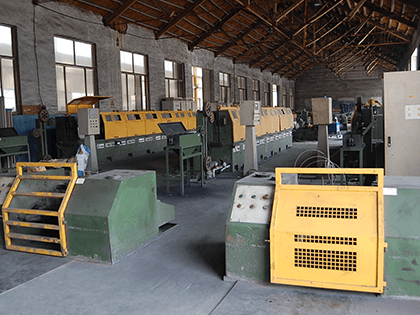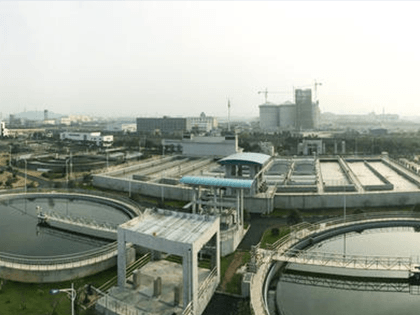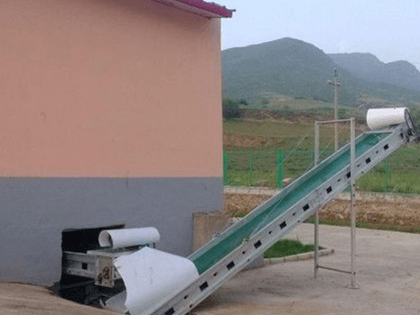Adding Calcium and Stable Disposal Technology: Current Problems in Sludge Disposal
Author: Taida machine Release time:2016-09-29
Reading guidance:Dehydrated sludge holds a high moisture content. The moisture content of dehydrated sludge in municipal sludge is 80% to 85%. This kind of sludge occupies much area. During burying process, much land r
Dehydrated sludge holds a high moisture content. The moisture content of dehydrated sludge in municipal sludge is 80% to 85%. This kind of sludge occupies much area. During burying process, much land resources are taken. This method will reduce the volume of landfill potentially and shorten the service span of landfill. According to relevant regulations, the moisture content of sludge should be lower than 60% before entering landfill area. If the sludge is used as covering soil, the moisture content should be lower than 45%. Meanwhile, sludge which holds high moisture content will block the collection pipe of percolate and biogas. If the percolate and biogas cannot be discharged normally, the soil of landfill will be uneven. Even, there is risk of explosion.
The shear and pressure bearing ability of dehydrated sludge is bad, which cannot meet the demand of landfill. Dehydrated sludge whose moisture content is about 80% holds good state and bad plasticity. This kind of sludge cannot afford the walking of equipment and equipment will sink into mud. The normal work of landfill will be affected. This is the main reason why so many landfill plants are unwilling to accept dehydrated sludge. It is regulated in Urban Sewage Treatment Plant Sludge Disposal Mixed Landfill Shale that the transverse shear of sludge which will be used for landfill should be over than 25KN/㎡. The relevant regulations in foreign countries is much stricter.
Without sanitation disposal, a lot of microorganism and pathogenic bacteria exist in sludge, which makes sludge a source of pollution. At the same time, much odor will be produced while piling, which will influence surrounding environment.
In existing municipal sewage disposal plants, sanitary landfill is one of the main methods. This method accounts for about 6.3% in all disposal methods. Composting method accounts for 14.6%.Building materials utilization accounts for only 2.3%. Minority of sewage disposal plants adopt incineration, ocean discharge and natural dehydration. Dehydrated sludge holds a high moisture content. The moisture content of dehydrated sludge in municipal sludge is 80% to 85%. This kind of sludge occupies much area. During burying process, much land resources are taken. This method will reduce the volume of landfill potentially and shorten the service span of landfill. According to relevant regulations, the moisture content of sludge should be lower than 60% before entering landfill area. If the sludge is used as covering soil, the moisture content should be lower than 45%. Meanwhile, sludge which holds high moisture content will block the collection pipe of percolate and biogas. If the percolate and biogas cannot be discharged normally, the soil of landfill will be uneven. Even, there is risk of explosion.
The shear and pressure bearing ability of dehydrated sludge is bad, which cannot meet the demand of landfill. Dehydrated sludge whose moisture content is about 80% holds good state and bad plasticity. This kind of sludge cannot afford the walking of equipment and equipment will sink into mud. The normal work of landfill will be affected. This is the main reason why so many landfill plants are unwilling to accept dehydrated sludge. It is regulated in Urban Sewage Treatment Plant Sludge Disposal Mixed Landfill Shale that the transverse shear of sludge which will be used for landfill should be over than 25KN/㎡. The relevant regulations in foreign countries is much stricter.
Without sanitation disposal, a lot of microorganism and pathogenic bacteria exist in sludge, which makes sludge a source of pollution. At the same time, much odor will be produced while piling, which will influence surrounding environment.
In existing municipal sewage disposal plants, sanitary landfill is one of the main methods. This method accounts for about 6.3% in all disposal methods. Composting method accounts for 14.6%.Building materials utilization accounts for only 2.3%. Minority of sewage disposal plants adopt incineration, ocean discharge and natural dehydration.
The shear and pressure bearing ability of dehydrated sludge is bad, which cannot meet the demand of landfill. Dehydrated sludge whose moisture content is about 80% holds good state and bad plasticity. This kind of sludge cannot afford the walking of equipment and equipment will sink into mud. The normal work of landfill will be affected. This is the main reason why so many landfill plants are unwilling to accept dehydrated sludge. It is regulated in Urban Sewage Treatment Plant Sludge Disposal Mixed Landfill Shale that the transverse shear of sludge which will be used for landfill should be over than 25KN/㎡. The relevant regulations in foreign countries is much stricter.
Without sanitation disposal, a lot of microorganism and pathogenic bacteria exist in sludge, which makes sludge a source of pollution. At the same time, much odor will be produced while piling, which will influence surrounding environment.
In existing municipal sewage disposal plants, sanitary landfill is one of the main methods. This method accounts for about 6.3% in all disposal methods. Composting method accounts for 14.6%.Building materials utilization accounts for only 2.3%. Minority of sewage disposal plants adopt incineration, ocean discharge and natural dehydration. Dehydrated sludge holds a high moisture content. The moisture content of dehydrated sludge in municipal sludge is 80% to 85%. This kind of sludge occupies much area. During burying process, much land resources are taken. This method will reduce the volume of landfill potentially and shorten the service span of landfill. According to relevant regulations, the moisture content of sludge should be lower than 60% before entering landfill area. If the sludge is used as covering soil, the moisture content should be lower than 45%. Meanwhile, sludge which holds high moisture content will block the collection pipe of percolate and biogas. If the percolate and biogas cannot be discharged normally, the soil of landfill will be uneven. Even, there is risk of explosion.
The shear and pressure bearing ability of dehydrated sludge is bad, which cannot meet the demand of landfill. Dehydrated sludge whose moisture content is about 80% holds good state and bad plasticity. This kind of sludge cannot afford the walking of equipment and equipment will sink into mud. The normal work of landfill will be affected. This is the main reason why so many landfill plants are unwilling to accept dehydrated sludge. It is regulated in Urban Sewage Treatment Plant Sludge Disposal Mixed Landfill Shale that the transverse shear of sludge which will be used for landfill should be over than 25KN/㎡. The relevant regulations in foreign countries is much stricter.
Without sanitation disposal, a lot of microorganism and pathogenic bacteria exist in sludge, which makes sludge a source of pollution. At the same time, much odor will be produced while piling, which will influence surrounding environment.
In existing municipal sewage disposal plants, sanitary landfill is one of the main methods. This method accounts for about 6.3% in all disposal methods. Composting method accounts for 14.6%.Building materials utilization accounts for only 2.3%. Minority of sewage disposal plants adopt incineration, ocean discharge and natural dehydration.
:Sludge Treatment: Methods for Sludge Composting :Comparison Between Different Sludge Disposal Methods
Relevant news
- 2016-01-12OSC-II Model Sludge Dryer Deliv
- 2016-01-1215T/Day Aerobic Dynamic Ferment
- 2016-01-12Matters Should Be Paid Attentio
- 2016-01-12Methods exploration of chemical
- 2016-01-12Analysis of circulating fluid b
Industry trends
- 2016-01-12Comparison Between Different Sl
- 2016-01-12Adding Calcium and Stable Dispo
- 2016-01-12Sludge Treatment: Methods for S
- 2016-01-12Use Dyeing Sludge As Resource
- 2016-01-12Current situation of sludge dis
Hot spots
Hot-sale products

- Leather Industry Sludge Drying
Production Capacity:1-2200t/h

- Welding Plating Sludge Drying S
Production Capacity:1-2200t/h

- Municipal Sludge Drying Solutio
Production Capacity:1-2200t/h

- Manure Sludge Drying Solution
Production Capacity:1-2200t/h
 中文
中文 English
English Home
Home
